This is an updated version of a post originally published on March 4th 2016.
Construction is underway on two new OHSU buildings in their emerging South Waterfront campus, both designed by ZGF Architects. The project will include the Center for Health and Healing (CHH) South, a 15 story, 244′-7″ tall ambulatory hospital and research building on Block 29. On Block 28 the 11 story Rood Family Pavilion is planned, which will include a parking garage and a total of 76 rooms available to patients receiving outpatient treatment at OHSU.
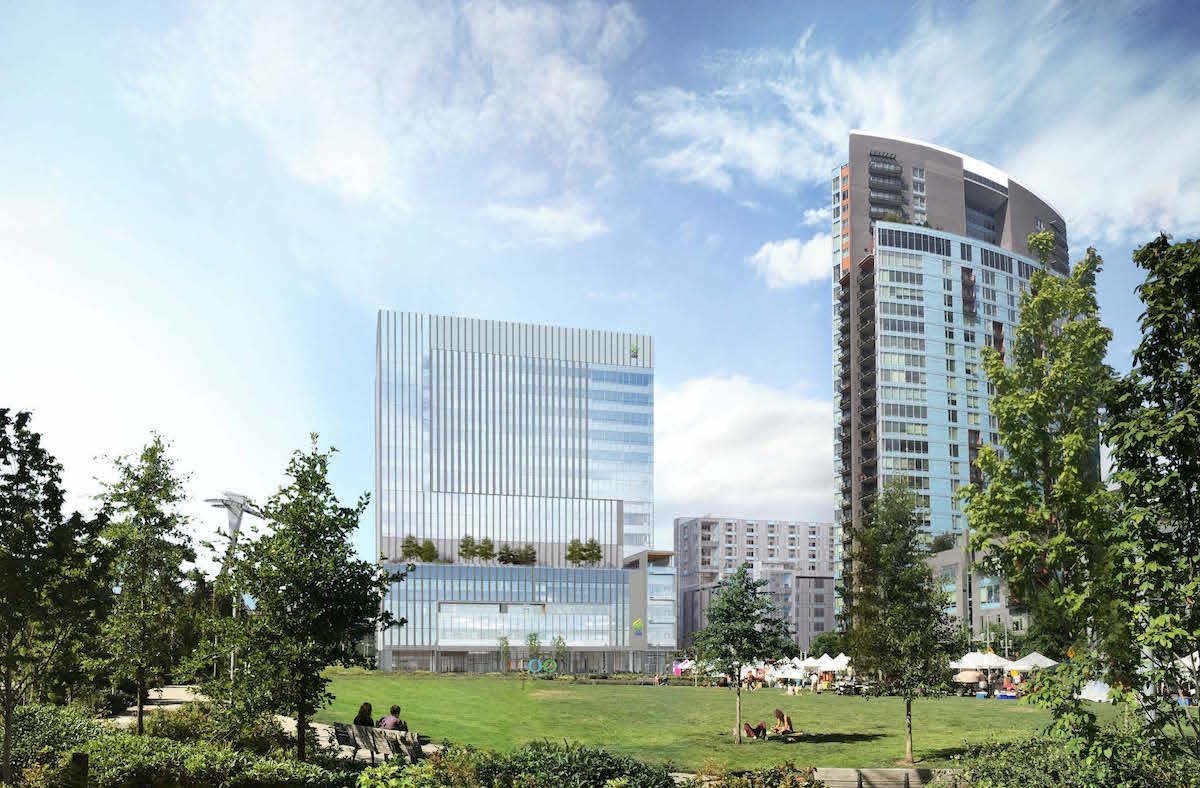
Hospital Building
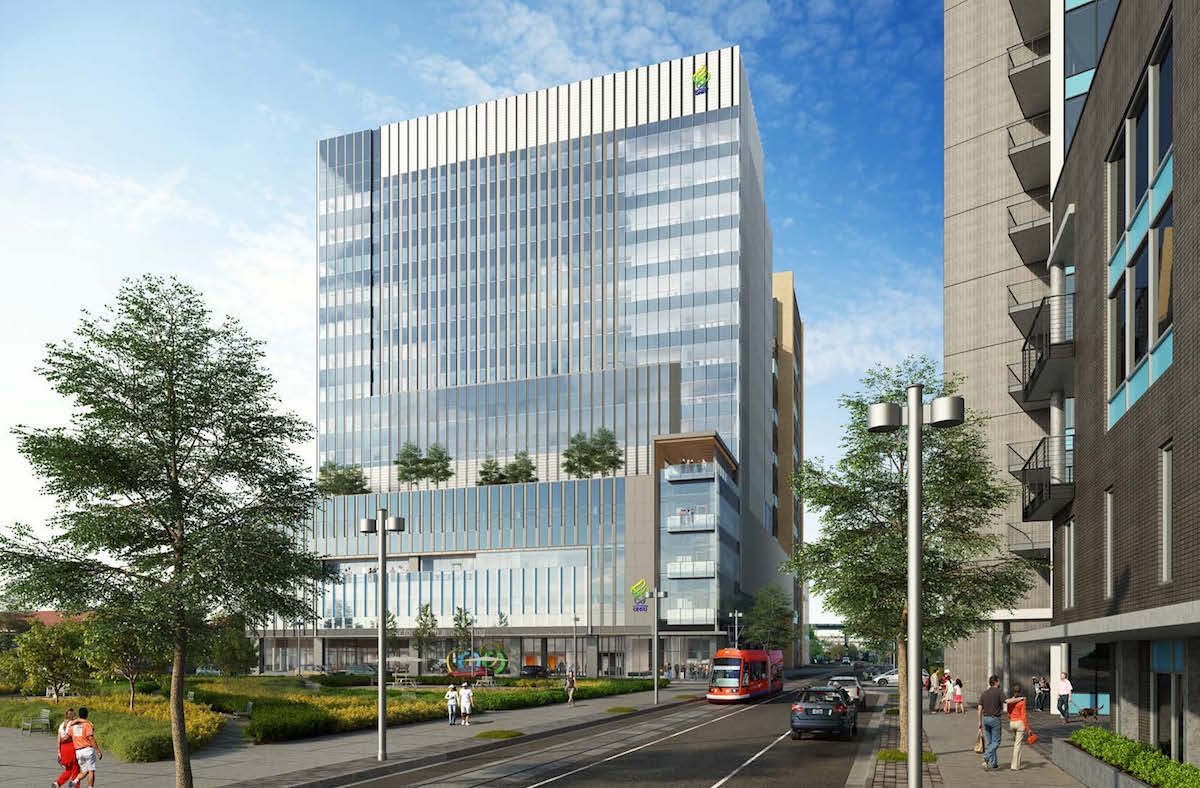
Block 29 is located between SW Curry St, SW Bond Ave, SW Whitaker St and SW Moody Ave. Until 2016 it was developed with temporary landscaping at the ground level, which hid a below grade parking garage.
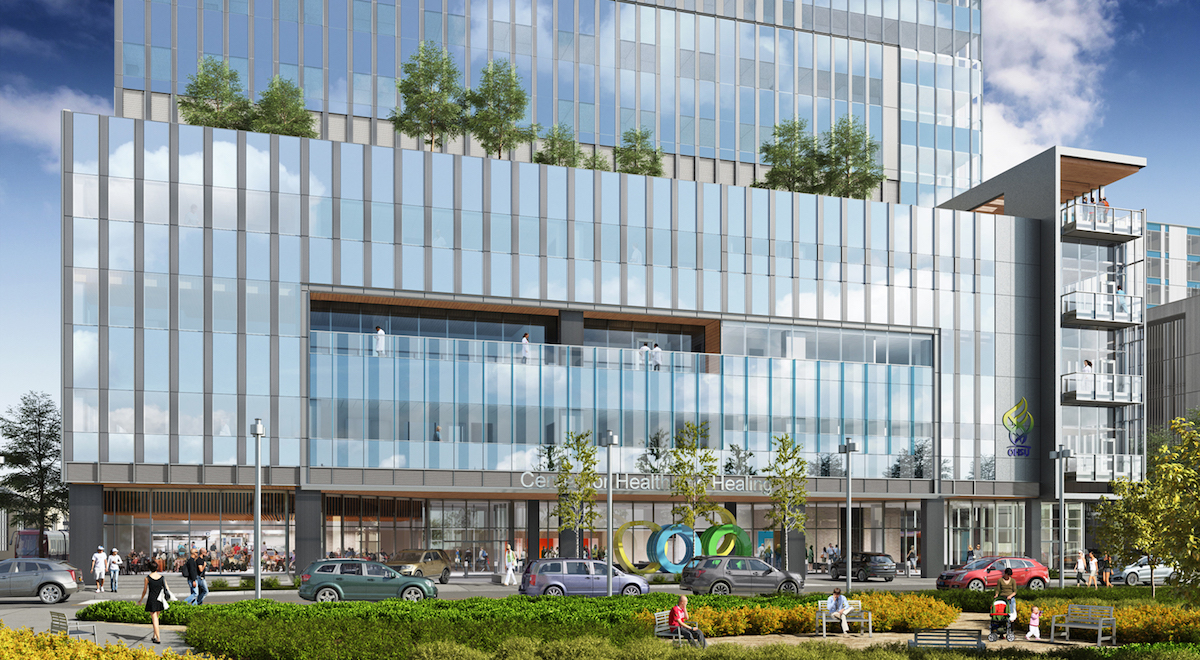
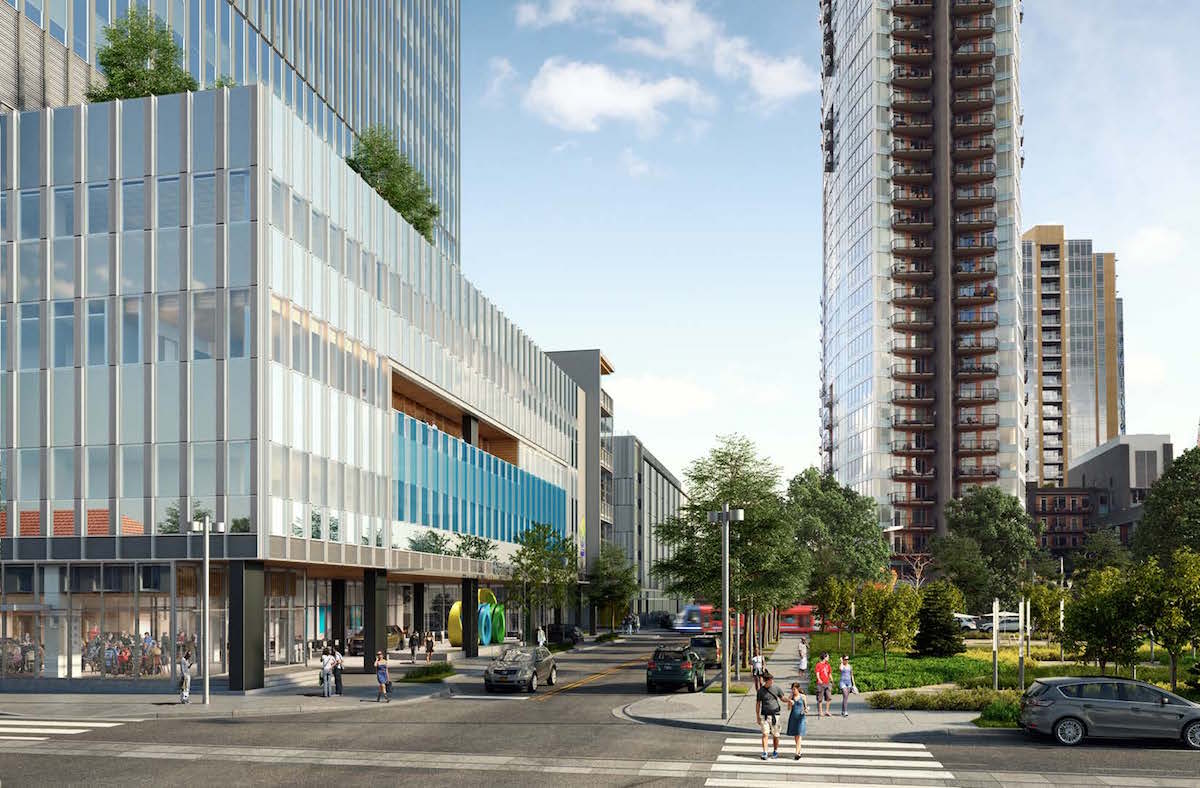
The 397,099 sq ft hospital building will be used for what OHSU describes as “highly complex outpatient surgeries & invasive procedures”. The 7 existing operating rooms in CHH North will be connected to 10 new operating rooms in the South building, which will also contain support space including central sterile processing and extended stay floors. Clinics and space for the Knight Cancer Institute to conduct clinical trials will be located in the upper floors of the building. At the ground level the building will include drop off and check in functions, an outpatient pharmacy and a dining area. The primary material for the Center for Health and Healing South will be a glass curtain wall system, in varying patterns. Secondary materials will include metal louvers and aluminum panels.
The overall massing and exterior expression of the hospital was consistently praised by the Commission during the review process. As such, it has remained relatively consistent since it was presented at the second Design Advice hearing, and subsequently at the first Design Review hearing. Design Commission feedback resulted in an electrical room proposed at the corner of SW Moody and Whitaker being relocated and replaced with staff break room. The largest area of discussion during the multiple hearings was the public drop off facing Caruthers Park. Though the Design Commission was originally resistant to the drop off being located on SW Curry, they ultimately accepted it as necessary, though pushed the applicants to make it as pedestrian friendly as possible.
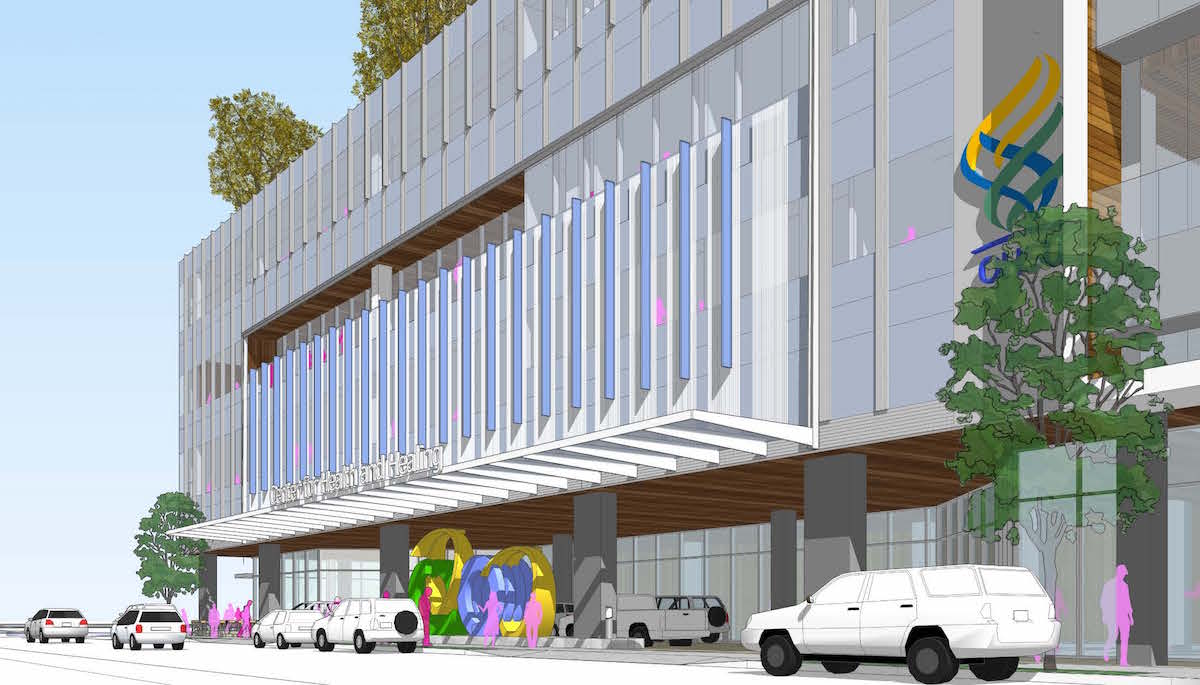
Skybridge
A skybridge will connect the new building on Block 29 to the existing Center for Health and Healing, located directly to the north. The bridge will provide a sterile connection between surgical suites, recovery areas and sterile processing areas in the north and south buildings.
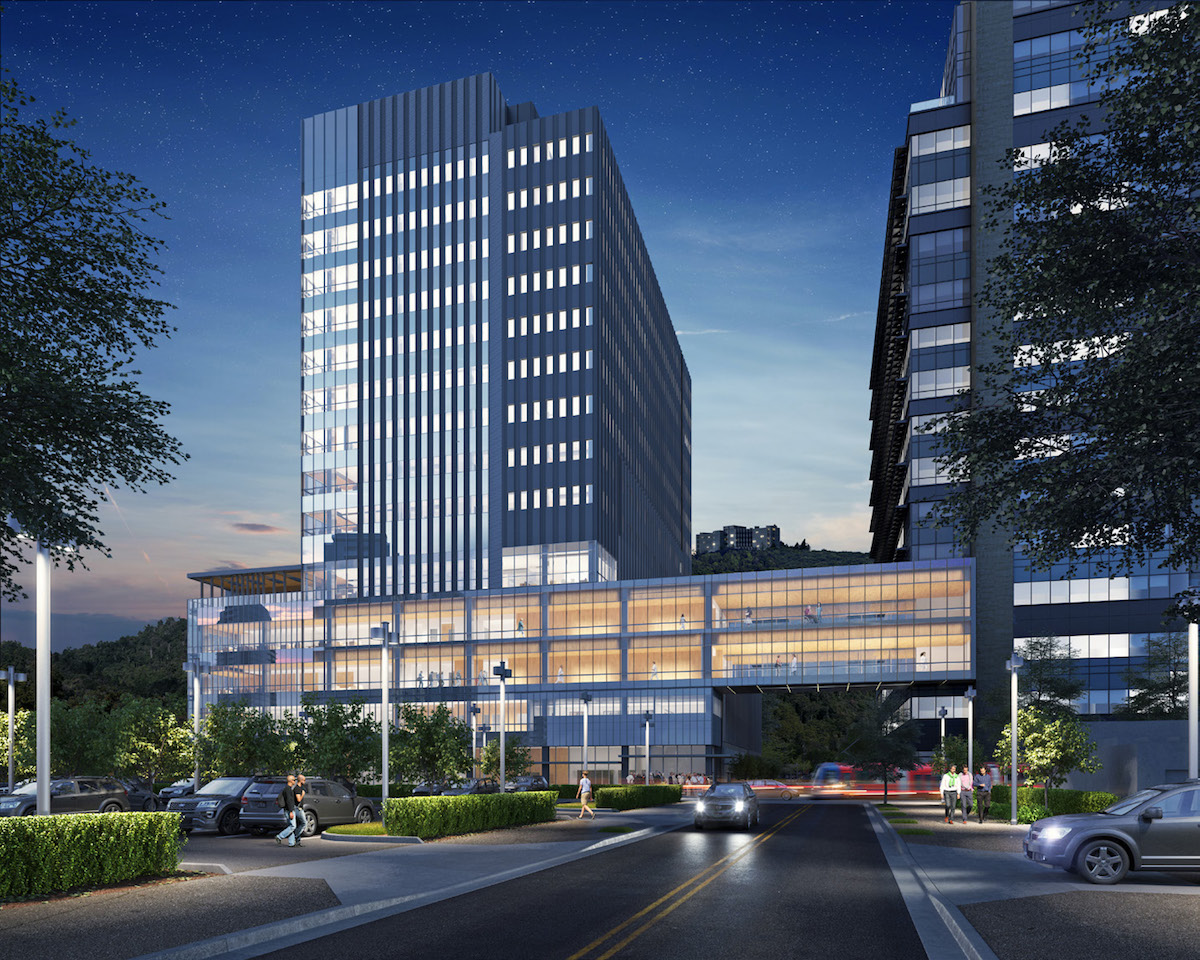
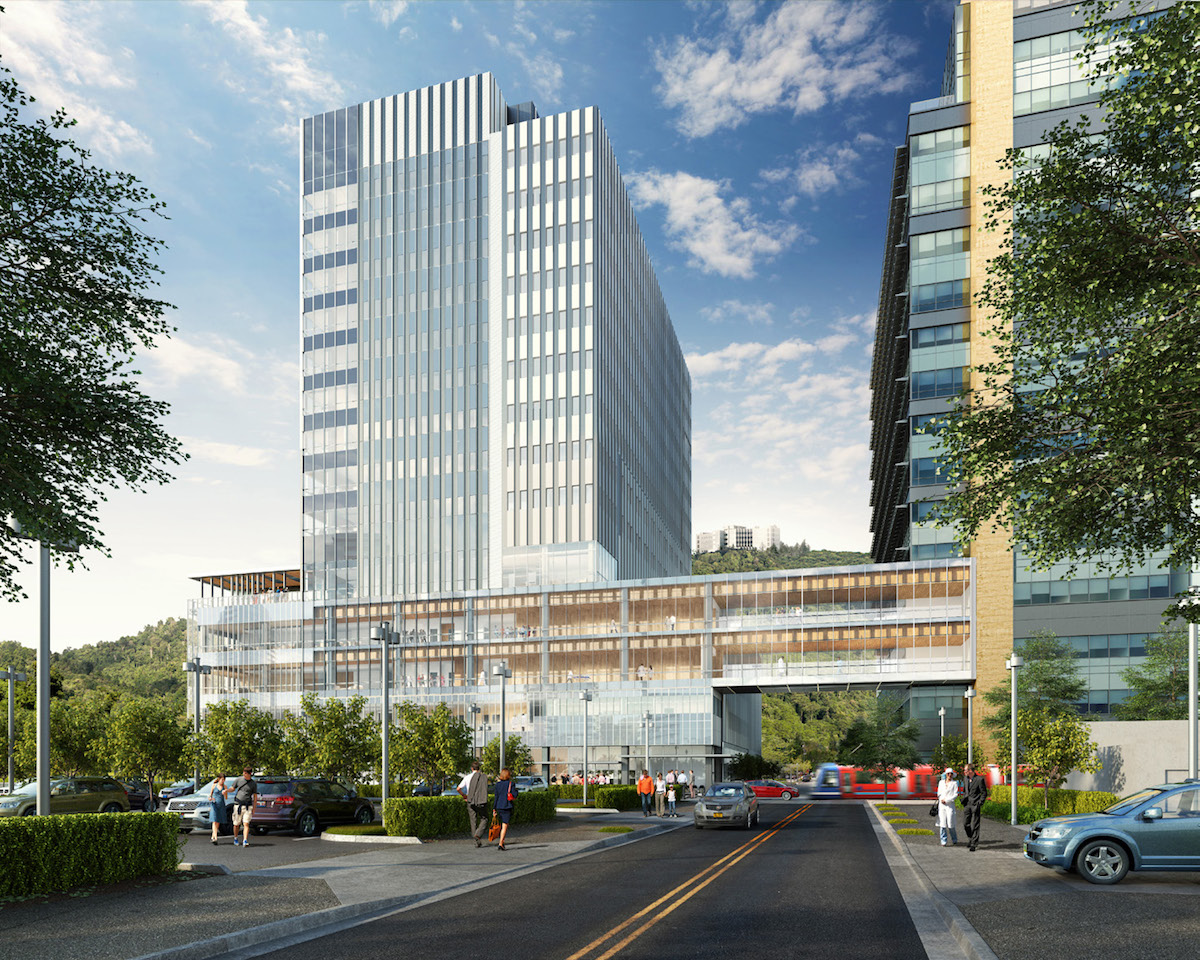
Skybridges are generally discouraged in Portland, due to their potential to take people away from the street. The initial proposal for the CHH South development had an additional skybridge connecting the hospital to the patient housing, the need for which was questioned by the Design Commission. The Design Commission voted to recommended to approval for the one remaining skybridge in July 2015. The City Council approved the major encroachment review in October 2015.
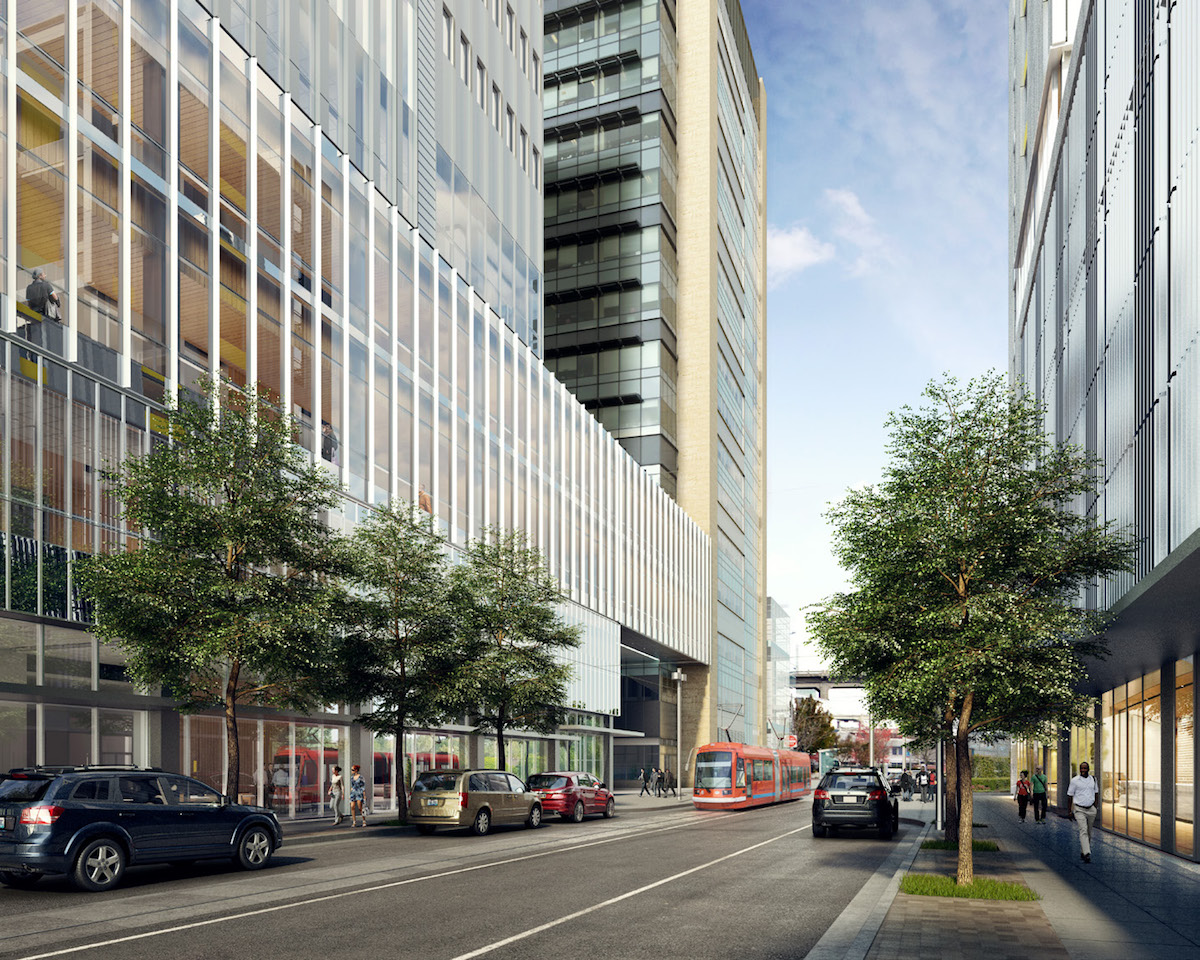
Rood Family Pavilion
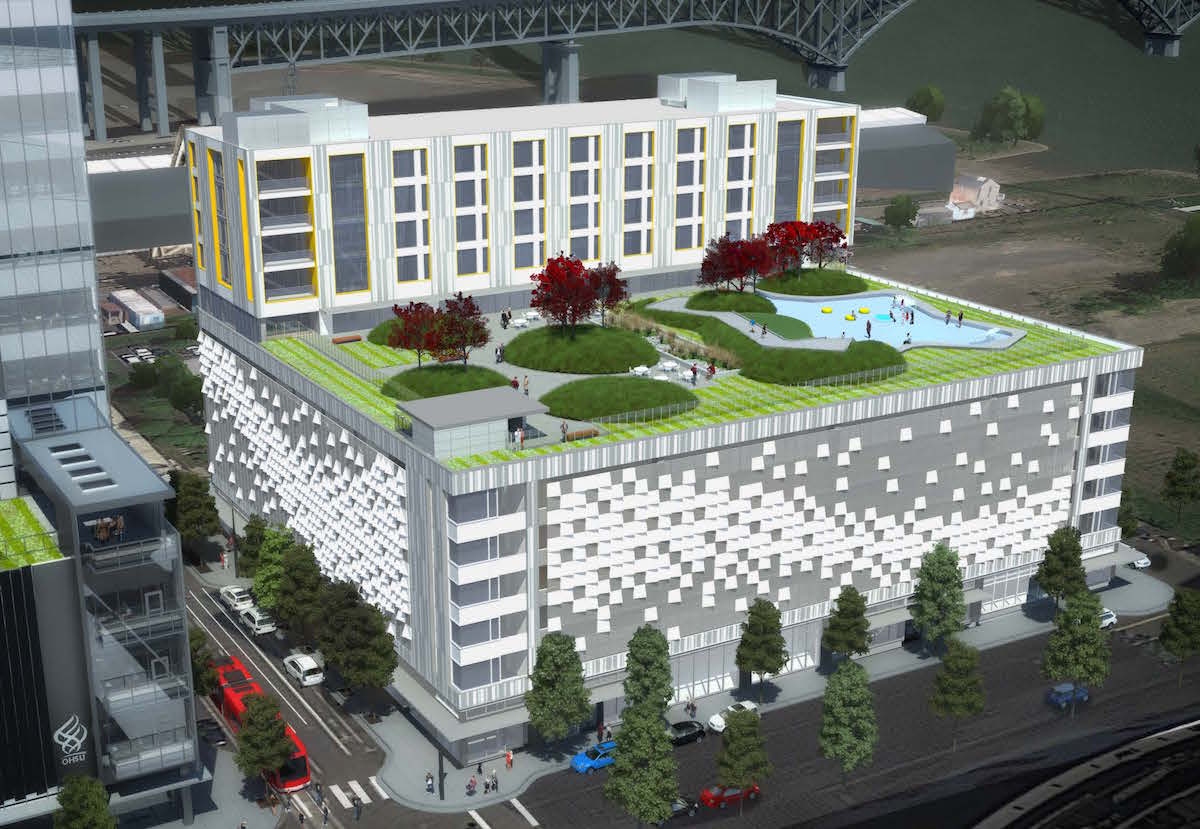
The Rood Family Pavilion, which will house patient housing and a garage, will be located on Block 28. The block is bound by SW Curry St, SW River Parkway, SW Whitaker St and SW Bond Ave. The site had most recently been used for surface parking. The building is being named after Gary and Christine Rood of Vancouver, Washington, who donated $12 million towards the project’s construction.
The garage will provide parking for 678 vehicles, in levels 2 to 6 of the structure. On top of the parking structure OHSU will provide 5 stories of guest housing for patients coming to Portland for treatment from across the state and region. Dining areas for adult and juvenile patients at the 7th level will be located directly adjacent to a landscaped terrace. Conference facilities and an urgent care facility will be located at the ground level.
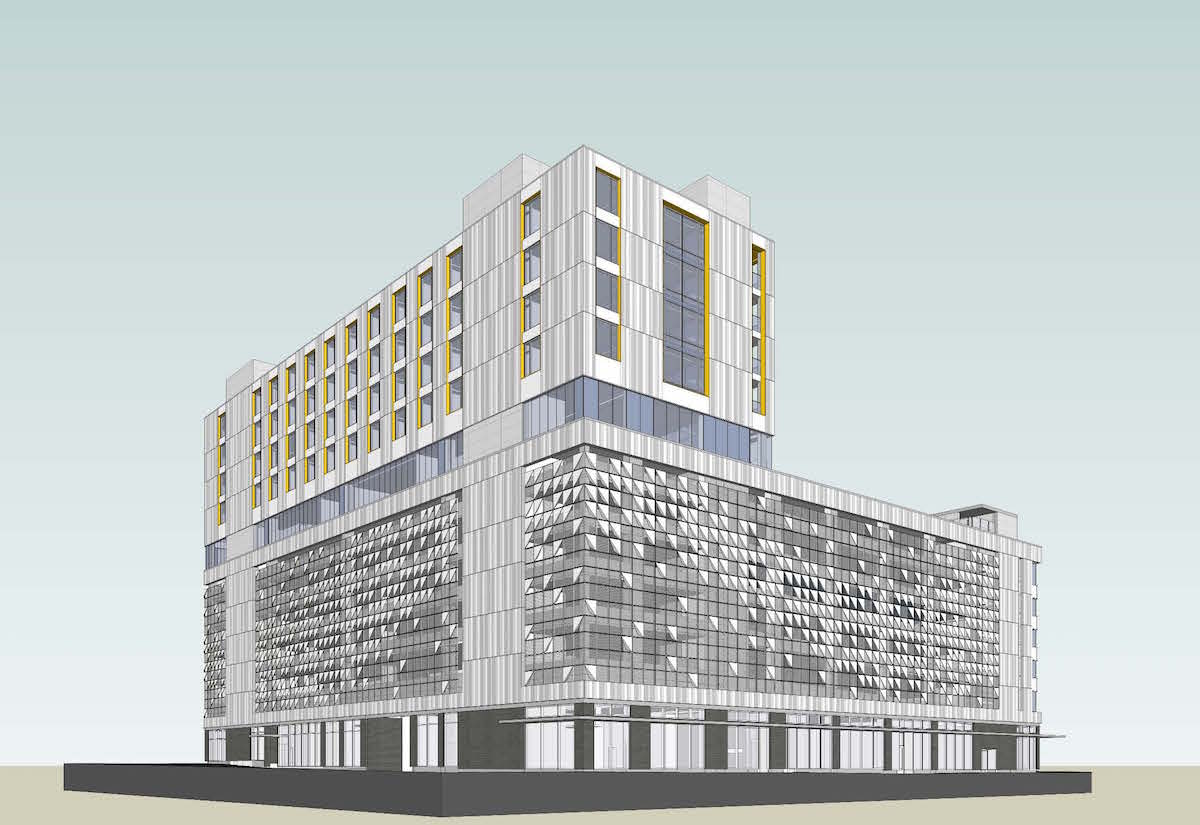
Based on feedback given at the first Design Review hearing the skin of the garage was significantly revised. The garage will be clad with perforated metal panel, punctuated by folded metal panels in a pattern inspired by the flight path of birds. The metal panels will be painted white on the front, and a marigold yellow on the rear side. Other materials used on the Block 28 building will include formed metal panels with an offset pattern, fiberglass windows and glass curtainwall.
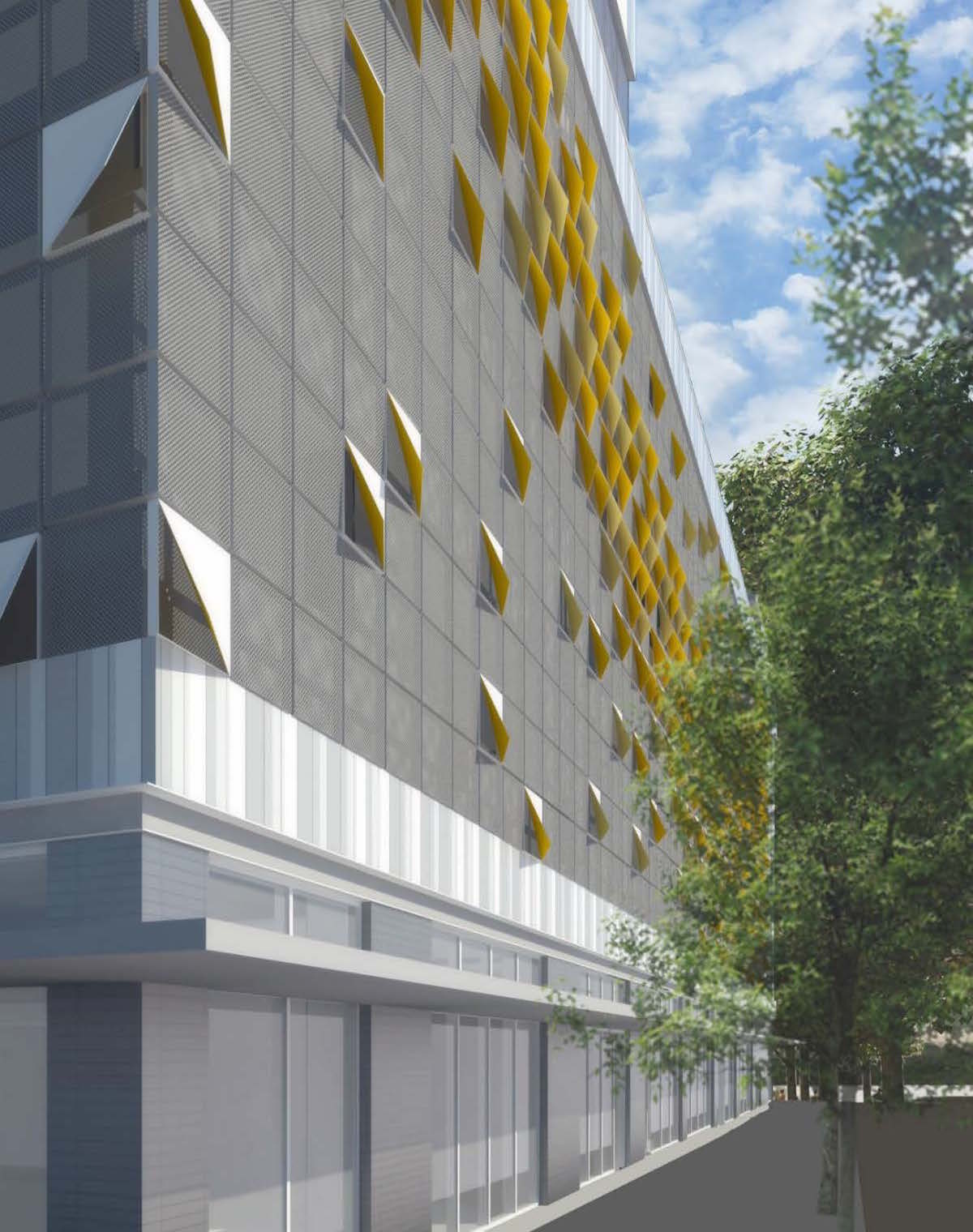
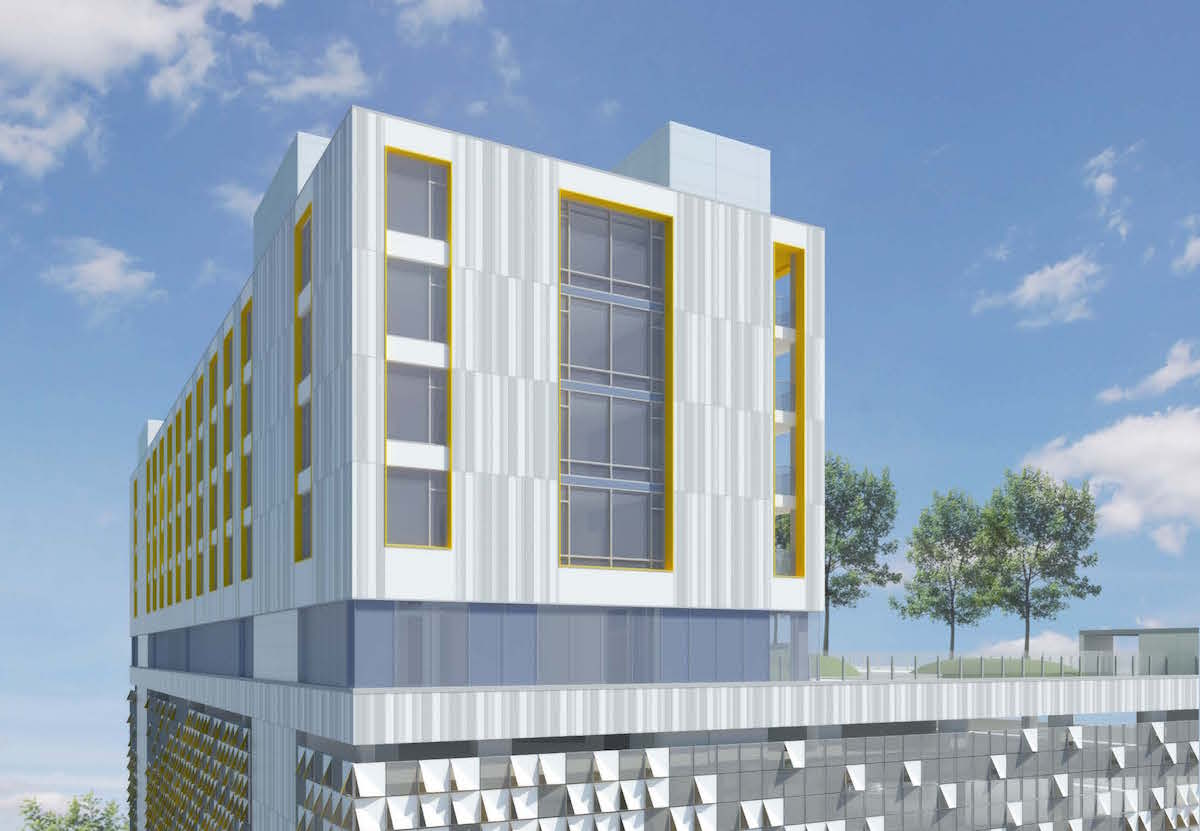
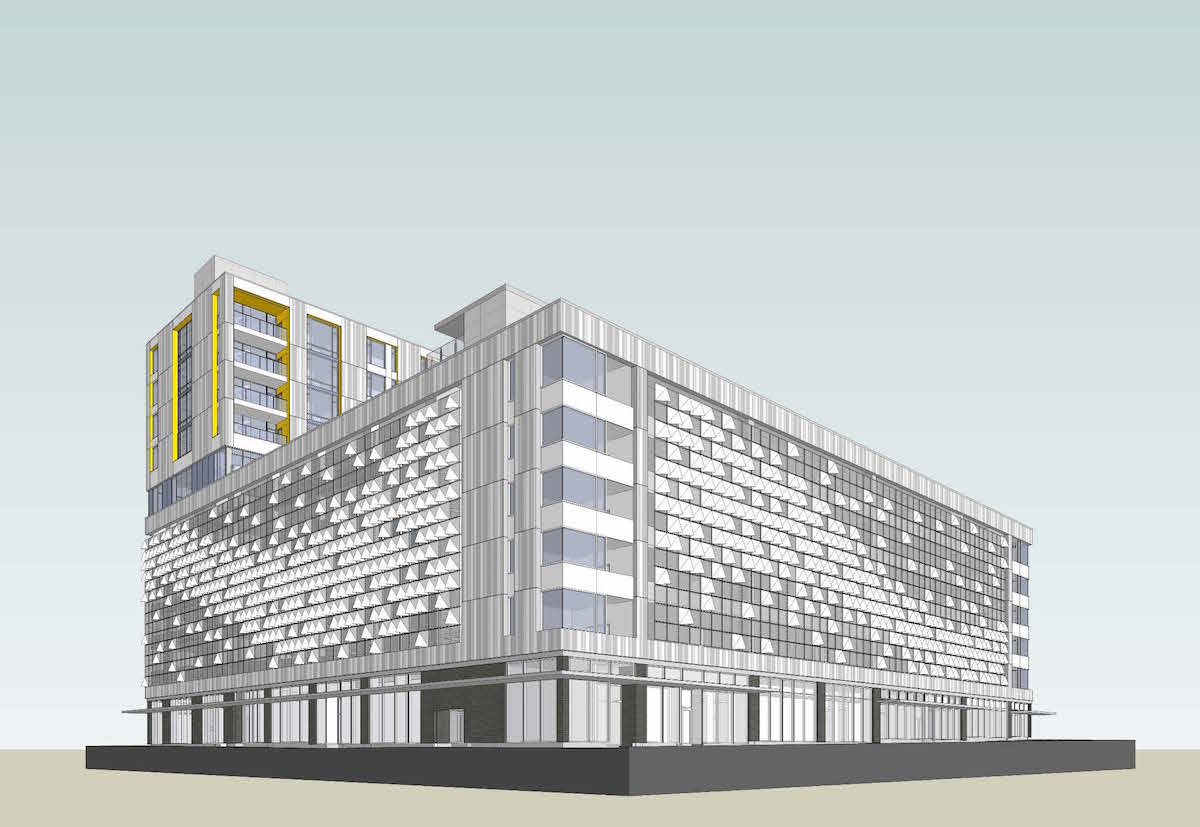
Level 7 of the Rood Family Pavilion will contain the communal spaces, including shared kitchens, a play room, library, adult and pediatric dining areas. These will open directly on to a rooftop garden, located above the parking structure.
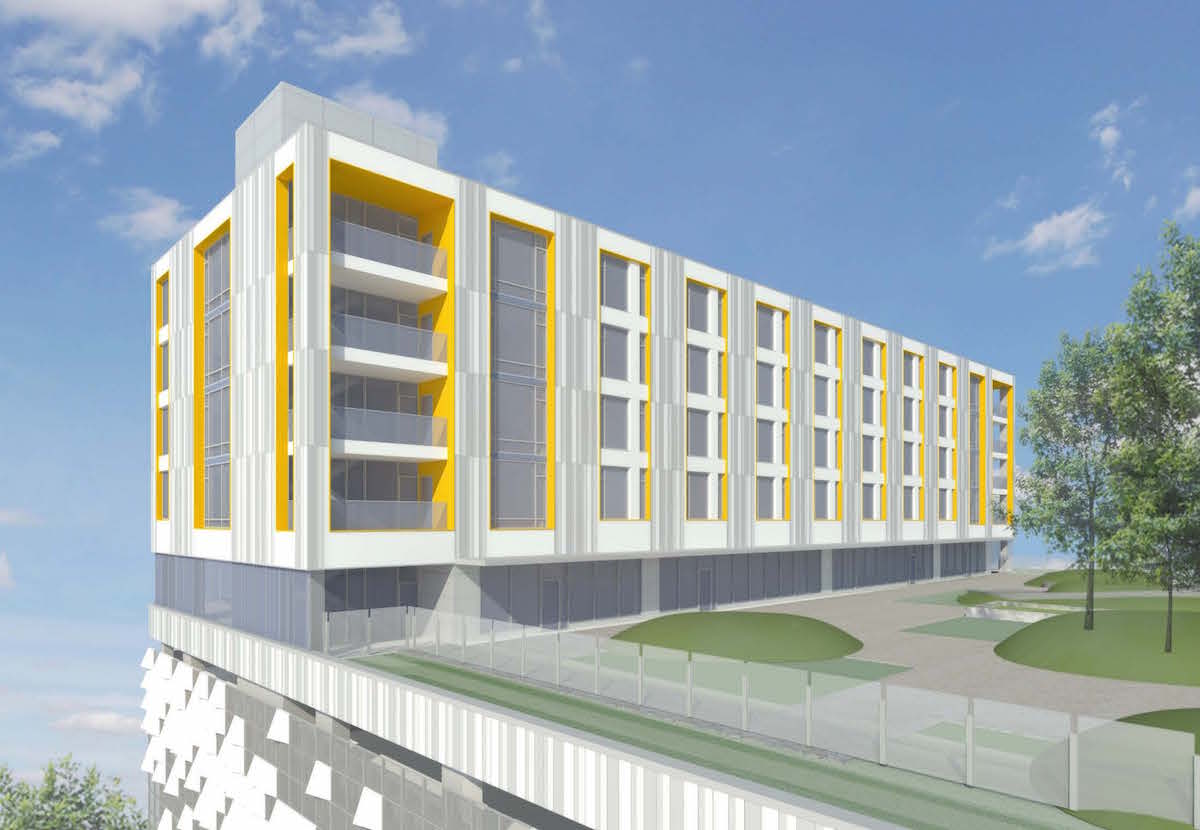
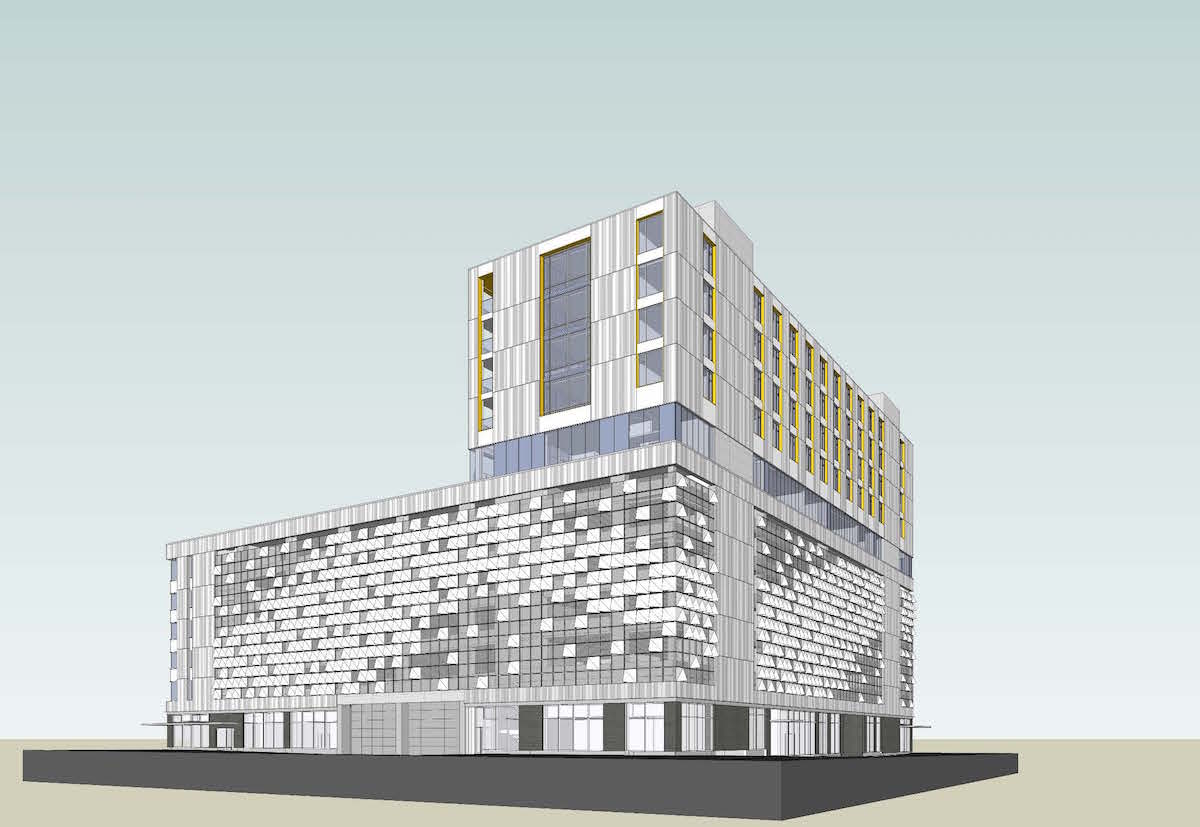
At the project’s third hearing on February 18th 2016 it was approved [PDF] by a 3-1 vote of the Design Commission. Commissioners Simpsons, Vallaster and Wark voted in favor, while Commissioner Savinar voted against. Before casting his vote in favor, Commissioner Wark urged OHSU to study how they will develop on their other lots in South Waterfront:
There’s a skybridge, a porte-cochère and above grade parking. Those are kind of anathema almost anywhere else in the city. I think we’ve kind of gone that direction because of the mission and things that are very critical, where there aren’t really options relative to the porte-cochère, unless we eliminate it altogether. But given the sensitive nature of your mission, and particularly this facility, those have been tentatively approved. But I would strongly encourage at this point that for the remaining properties you have: do a masterplan. Map it out. I would hate to see additional skybridges, porte-cochères and above grade parking in the district. It just becomes less and less humane with those elements. That’s why they’re not elsewhere in the city. So I think it’s in your best interest, and the greater interest of the city, to masterplan your remaining sites. But given that, and our acceptance of these throughout the process, I think you’ve made the best of the situation of these things that are problematic from an urban standpoint.
The first building permits for the project were issued in March 2016. Construction on both buildings is expected to be completed in 2019.
Drawings
- Plan – Vicinity
- Plan – Site
- Block 29 – Plan – Ground
- Block 29 – Plan – Level 2
- Block 29 – Plan – Level 3
- Block 29 – Plan – Level 4
- Block 29 – Plan – Level 5 (Terrace)
- Block 29 – Plan – Level 6
- Block 29 – Plan – Level 7
- Block 29 – Plan – Level 8
- Block 29 – Plan – Level 9
- Block 29 – Plan – Level 10
- Block 29 – Plan – Level 11
- Block 29 – Plan – Level 12
- Block 29 – Plan – Level 13
- Block 29 – Plan – Level 14
- Block 29 – Plan – Level 15
- Block 29 – Plan – Roof
- Block 29 – Plan – Parking P1
- Block 29 – Plan – Parking P2
- Block 29 – Plan – Parking P3
- Block 29 – Elevation – South
- Block 29 – Elevation – East
- Block 29 – Elevation – North
- Block 29 – Elevation – West
- Block 29 – Section
- Block 28 – Plan – Ground
- Block 28 – Plan – Level 4 (Typical Parking)
- Block 28 – Plan – Level 7 (Terrace)
- Block 28 – Plan – Level 8 (Typical Guest Housing)
- Block 28 – Roof
- Block 28 – Plan – Level B1
- Block 28 – Plan – Level B2
- Block 28 – Elevation – East
- Block 28 – Elevation – South
- Block 28 – Elevation – West
- Block 28 – Elevation – North
- Block 28 – Section
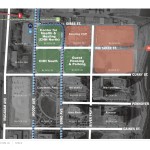
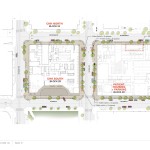
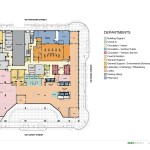
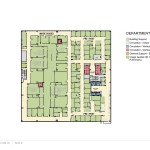
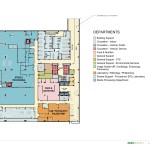
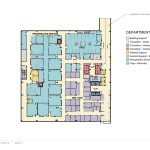
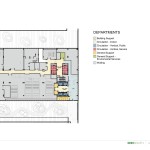
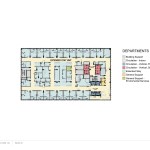
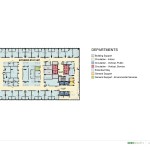
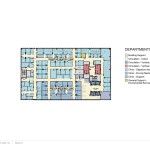
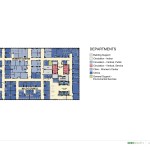
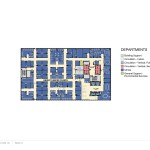
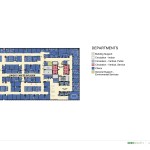
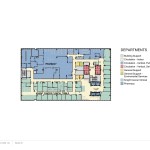
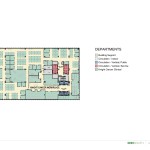
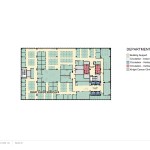
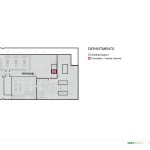
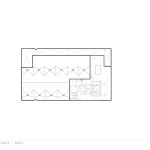
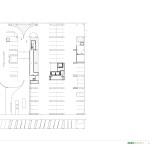
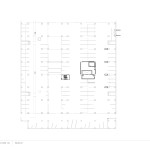
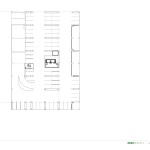
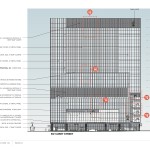
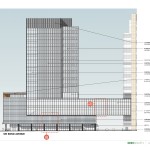
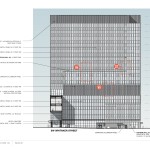
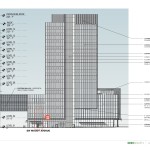
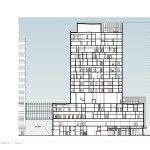
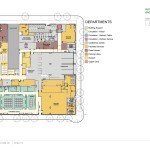
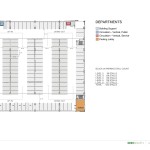
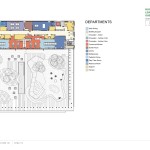
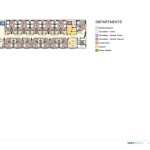
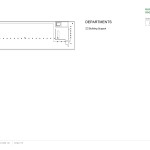
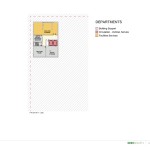
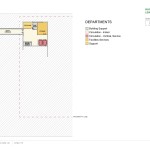
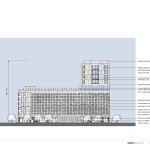
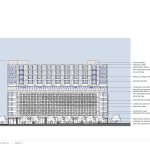
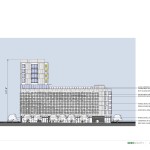
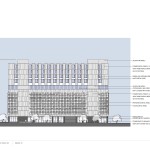
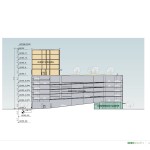
How did they possibly approve that garage and patient housing? It looks absurd. While the individual parts may have merit, the way they all come together (or rather don’t come together) is extremely awkward.
They won’t have frontage on Moody.